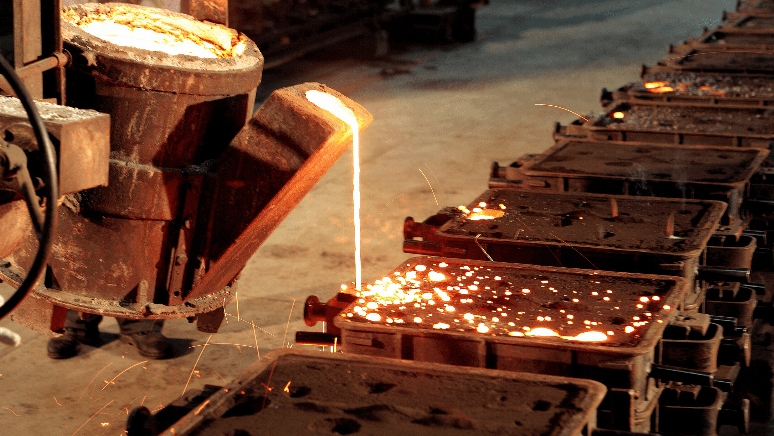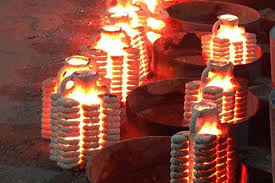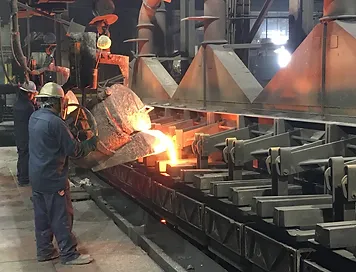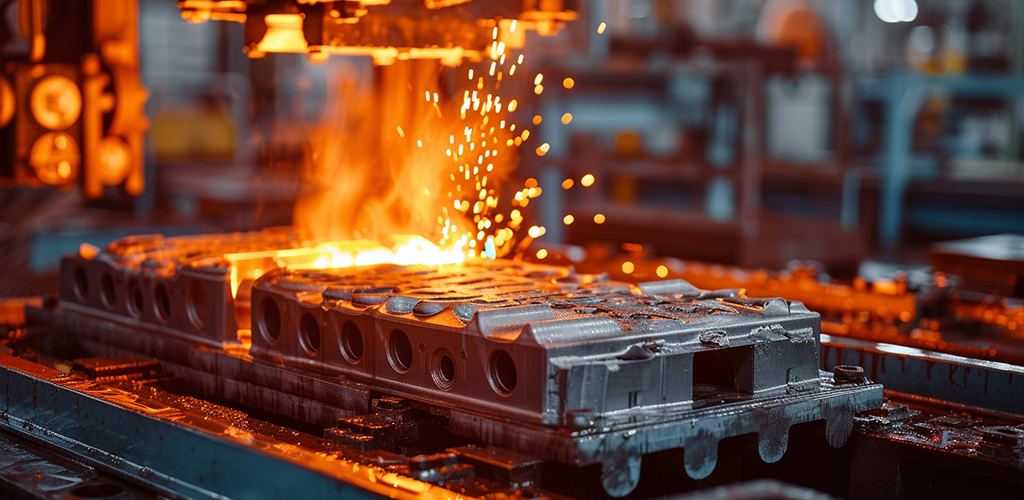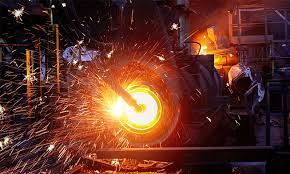Classification of Foundry Plants Based on Casting Processes and Materials
2025-01-02 14:44:10 hits:0
Classification of Foundry Plants Based on Production Processes and Casting Materials
Foundry plants can be classified based on their production processes and the casting materials used. Below are the main types of foundries and a detailed explanation of their processes, primary raw materials, and typical applications.
1. Sand Casting Foundry
Sand casting (also known as sand mold casting) is a process in which a model is made in sand for metal casting. It is commonly used for large-scale production or single-piece and small-batch casting.
Production Process:
- Model Making: A model of the casting is made based on the design drawing, using materials such as wood, metal, or plastic.
- Molding: The model is placed in a sand box, and sand is filled around it. Vibration or compaction is used to make the sand compact.
- Drying the Mold: To improve the strength of the sand mold, it is often dried.
- Melting the Metal: Metal raw materials (such as iron, aluminum, etc.) are heated to a molten state.
- Pouring: The molten metal is poured into the cavity of the sand mold to form the casting.
- Cooling and Demolding: After cooling, the mold is removed, and the casting is obtained as a rough part.
- Post-processing: Includes removing burrs, and finishing the casting surface.
Main Raw Materials:
- Sand: Commonly used sands include silica sand, clay sand, etc.
- Metal Raw Materials: Cast iron, aluminum alloys, copper alloys, etc.
- Binders: Such as sodium silicate, clay, etc.
Product Applications:
- Mechanical Parts: Engine blocks, gears, valves, etc.
- Building Components: Large supports, foundation components, etc.
- Automotive Parts: Engine blocks, wheels, brake discs, etc.
2. Investment Casting Foundry
Investment casting, also known as lost wax casting, is suitable for complex shapes and high precision requirements. It is often used for small batches of high-value products.
Production Process:
- Wax Model Preparation: A wax model is created through injection molding. The wax model is highly precise and smooth.
- Coating: The wax model is coated with a refractory material, which is then hardened through heating.
- Wax Removal: The wax-coated model is heated, causing the wax to evaporate or melt, creating a cavity.
- Baking: The coating layer is further baked to harden and strengthen the mold.
- Melting the Metal: Metal materials (such as stainless steel, aluminum alloys, etc.) are melted.
- Pouring: The molten metal is poured into the prepared mold to form the casting.
- Cooling and Post-processing: After cooling, the shell is removed, and the casting is cleaned and finished.
Main Raw Materials:
- Wax: The core material used in investment casting, typically a special wax alloy.
- Refractory Coating: Materials like bauxite, quartz sand, etc.
- Metal Raw Materials: Stainless steel, titanium alloys, copper alloys, etc.
Product Applications:
- Aerospace Components: Engine parts, turbine blades, nozzles, etc.
- Medical Devices: Joint replacements, orthopedic instruments, etc.
- High-End Automotive Parts: Turbocharger components, engine parts, etc.
3. Die Casting Foundry
Die casting involves injecting molten metal into precision metal molds under high pressure. This method is suitable for mass production of aluminum or magnesium alloy castings requiring high precision.
Production Process:
- Mold Design and Fabrication: Metal molds (usually steel molds) are designed and manufactured based on the casting requirements.
- Metal Melting: Aluminum or magnesium alloy is heated to a molten state.
- Pressure Injection: The molten metal is injected into the metal mold under high pressure to form the casting.
- Cooling and Demolding: The metal solidifies in the mold, and the casting is ejected after cooling.
- Post-processing: Burr removal and surface treatment.
Main Raw Materials:
- Aluminum Alloys, Magnesium Alloys: Lightweight metals with high fluidity and low melting points.
- Tool Steel: Used to make molds with good high-temperature and pressure resistance.
Product Applications:
- Automotive Lightweight Parts: Wheels, engine housings, transmission casings, etc.
- Electronic Product Housings: Cases for phones, televisions, etc.
- Appliance Parts: Parts for air conditioners, washing machine housings, etc.
4. Gravity Casting Foundry
Gravity casting uses gravity to pour molten metal into sand or metal molds. It is suitable for mass production of castings.
Production Process:
- Mold Making: Create a sand mold or metal mold for the casting.
- Metal Melting: The metal is heated to a molten state.
- Pouring: The molten metal is poured into the mold using gravity.
- Cooling and Demolding: After cooling, the mold is removed, and the casting is obtained.
- Post-processing: Burr removal and surface cleaning.
Main Raw Materials:
- Cast Iron, Aluminum Alloys, Copper Alloys: Commonly used materials for making industrial parts.
Product Applications:
- Construction and Mining Machinery Parts: Crane parts, mining equipment components, etc.
- Power Equipment Parts: Generator casings, transformer housings, etc.
5. Centrifugal Casting Foundry
Centrifugal casting uses centrifugal force to distribute molten metal along the inner surface of a rotating mold. It is primarily used for producing circular castings.
Production Process:
- Mold Making: Typically made of steel molds or sand molds.
- Metal Melting: The metal is heated to a molten state.
- Centrifugal Casting: The molten metal is poured into a rotating mold, and centrifugal force pushes the metal against the mold's inner surface to form the casting.
- Cooling and Demolding: After cooling, the mold is removed, and the casting is obtained.
- Post-processing: Burr removal, finishing, and cleaning of the casting.
Main Raw Materials:
- Cast Iron, Copper Alloys, Aluminum Alloys: Commonly used for manufacturing pipes, shafts, and other products.
Product Applications:
- Pipes and Pipe Fittings: Water pipes, hot water pipes, gas supply pipes, etc.
- Shafts and Wheels: Automotive drive shafts, motor shafts, etc.

 en
en  fra
fra  de
de  ru
ru  gle
gle  th
th  ara
ara  it
it  jp
jp  kor
kor  zh
zh 